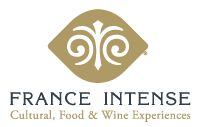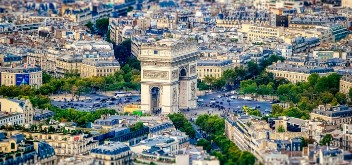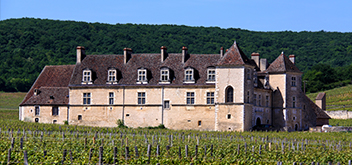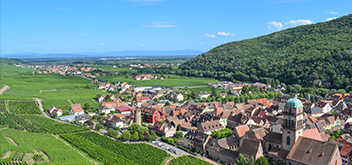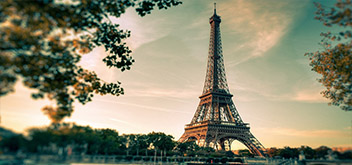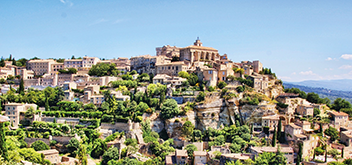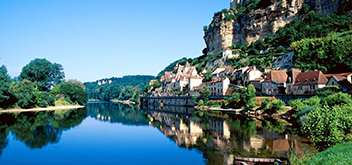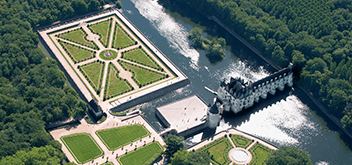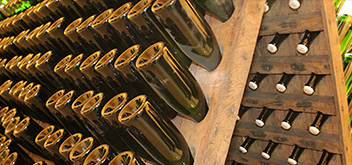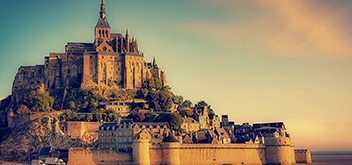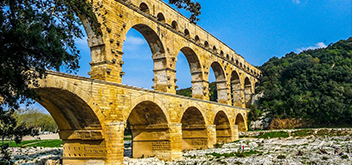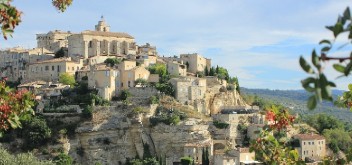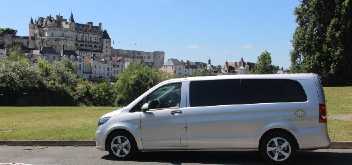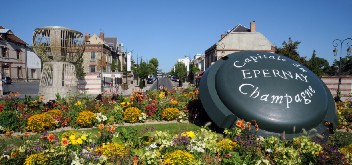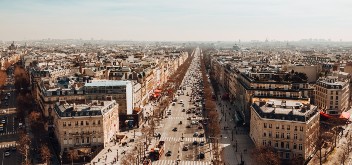No products
Towns and villages
Marseille
Situated between sea and hills, with 850 000 inhabitants, Marseille is an amazing city that changes with the seasons and passions. The city combines the richness of a unique heritage, an intense cultural life, and an exceptional location. Founded 2600 years ago by the ancient Greeks from Asia Minor, Marseille is one of the oldest cities in France. Marseille was historically the most important trade center in the region and functioned as the main trade port of the French Empire. Marseille is France's largest city on the Mediterranean coast and kept a strong identity as a port city; it is the largest commercial port as well as a leading cruise port and freight port. The city also held the title of European Capital of Culture in 2013.
Aix-en-Provence
Aix-en-Provence lies on the principal routes to Italy and the Alps. Aix has a population of 150 000 and is an agricultural center, producing olives, almonds and wine.
The city was founded in 123BC. During the Middle-Ages, Aix was the capital of Provence and reached its zenith after the 12th century, when it became an artistic center and seat of learning. Aix passed to the crown of France with the rest of Provence in the 15th century. This city of the Counts and its many mansion houses makes it an open-air history book. With this rich and vibrant thousands of years old heritage, the capital of Provence combines elements from all eras. The city is situated in a plain overlooking the Arc River. The city gently slopes from north to south and the Montagne Sainte-Victoire can easily be seen to the east. This mountain is one of the favorite perspectives of the painter Paul Cézanne, native of the city and father of the modern painting. The town is also famous for an average of 300 sunny days a year.
Aix-en-Provence is a canvas of delightful impressions, beautiful architecture and baroque splendor, colorful festivals, festivities and traditions, Provencal markets, delicious delicacies, walks and hikes in the countryside and relaxing activities…Make sure to include it in your Provence tour.
Avignon
Avignon is situated on the left bank of the Rhône river in Vaucluse department, Northwest of Marseille, it is a commercial and industrial center that manufactures flour, oil, textiles and wine. The population is around 100 000, among which 12 000 inhabitants live in the ancient town center enclosed by its medieval ramparts. Tourism is very important thanks to famous historical buildings and cultural events. The historical center, which includes the palace of the popes, the cathedral, and the remains of the ancient bridge of Avignon, became a UNESCO World Heritage Site in 1995. The grand project of 2015 is the opening of a wine tourism complex like no other – a showcase for the Rhône Valley’s AOC wines on the Pope’s palace Square.
Between 1309 and 1377 took place the Avignon Papacy, seven successive popes resided in Avignon. Papal control persisted until 1791 when, during the French Revolution, it became part of France. The town is now the capital of the Vaucluse department and one of the few French cities to have preserved its ramparts. Avignon is now a lively student city, its ancient cobbled streets lined with inviting boutiques and its leafy squares overflowing with cafe tables. In July thousands come for the renowned performing-arts festival, one of the most important theater festival of Europe.
Bandol
Bandol is a popular coastal town and a wine growing region in the western part of the Côte d'Azur and to the west of Toulon. As a tourist destination for a Provence tour, Bandol is not a newcomer to the scene: Thomas Mann, Aldous Huxley, Marcel Pagnol, and D.H. Lawrence all spent time here. Bandol is many things to many people. It is a vibrant harbor for boating enthusiasts accommodating about 1500 boats of all sizes at any given time, and to land-based vacationers Bandol is a beach town and buzzing hub of activity.
A wonderful promenade around the harbor delights the tourists: this is an attractive palm-tree lined walk, backed by some lovely pastel painted houses. Bandol port has also several bars and restaurants, perfect for people watching and eating, as well as a casino. In addition to the harbor there are several beaches close to the town center in Bandol. The center of the traditional village of Bandol is around a square called the Place du Marché where fountains, a church, shady plane trees and lively cafes combine to make a very attractive traditional Provencal square. The streets around the square are also fascinating to explore with a surprise around every corner like an ancient fountain, a tiny old house and flower boxes or a grand Belle Epoque villa…
Cassis
Situated about 25 km / 15.5 miles south-east of Marseille, the harbor of Cassis snuggles at the bottom of a steep bowl of land surrounded by lush vines and pine trees. On the south-western side of the town, towards Marseille, several calanques are at a short distance. The town is dominated by the Cap Canaille to the south-east, at 400m/ 1300 feet one of the highest cliffs in Europe, while the route des Crêtes between Cassis and La Ciotat is one of the most scenic drives in Southern Provence.
Cassis is a very ancient fishing port. In the 18th century, the village was rebuilt on the old ruins, resulting in a more regular layout than most other medieval villages. A walk through the old village streets will reveal old fountains, open-air artists market and some nice old buildings, some dating back to the 16th century, and some restored with the colorful pastels of Provence. A fine old chateau-fort, the 1381 Chateaux de la Maison des Baux, privately owned, dominates the harbor. This little fishing port, tucked between the two exceptional natural sites (Calanques and the Cap Canaille) offers a concentrated version of Provence and the Mediterranean. For ten days at the end of June, the Fêtes de la Mer (sea party) feature a number of sea-themed festivities, including marine jousting, folk dancing, boat races and a regatta, a procession and a sardinade (sardine feast). Cassis is also famous today for its regional wine, mainly whites, but also rosé and red.
Roussillon
Surrounded by the biggest ochre deposits in the world, Roussillon is an enchanting village. In the rock, there is a great mix of different oxides that gives Roussillon's surroundings their distinctive colors; it is used to build the walls of local houses. Visitors paying to follow the Sentier des Ocres ('Ochre Trail') are taken on a journey of discovery passing a breathtaking succession of rocky tunnels and superb sites which have been forged over the centuries by wind, water and man.
Gordes
Known as one of the most beautiful villages in France, Gordes is absolutely captivating. The town is located east of Avignon and just west of Roussillon, and like the latter it was built on top of a hill. The village’s 2,000 inhabitants live in stone houses with terracotta roofs. Gordes also has an impressive castle, which is open to visitors. The beauty of Gordes on top of the cliff and its panoramic views of the surrounding landscape were not lost on the many famous artists who frequented the village, such as Marc Chagall. A Provence tour usually includes this charming village. The surrounding countryside is also worth exploring: besides expansive fields of poppies and lavender, you’ll find attractions such as the strange village of dry-stone huts called Les Bories, an ancient oil mill, and especially the legendary and picturesque Sénanque Abbey.
Arles
Arles has a great situation in Provence, in between Avignon and Marseille, right on top of the Rhône Delta (the beautiful Camargue). This quaint typical town is renowned for its impressive roman ruins and its association with Van Ghog. Open squares with bustling cafes, linked by narrow streets lined with attractive houses and shops, many looking old and faded and all the more romantic as a result. The centre of Arles is quite compact and easy to explore. One of the greatest monument of Arles is the roman amphitheater; a large and substantially intact round structure once used for gladiatorial competitions. The city also boast an excellent Museum of Arles and Provence, as well as a very interesting Espace Van Gogh. Arles is one of the French 'secteur sauvegardé' towns and is also listed as a Town of Art and History in France.
